F.P. Journe Chronomètre Optimum Black Label Reviewed by Tim Mosso
by Tim Mosso
Technically, this F.P. Journe watch is called the “Chronomètre Optimum Black Label,” but it should be called the “Ultimate.” That’s how much I revere and admire a timepiece Journe himself describes as the most accurate mechanical watch he knows how to construct.
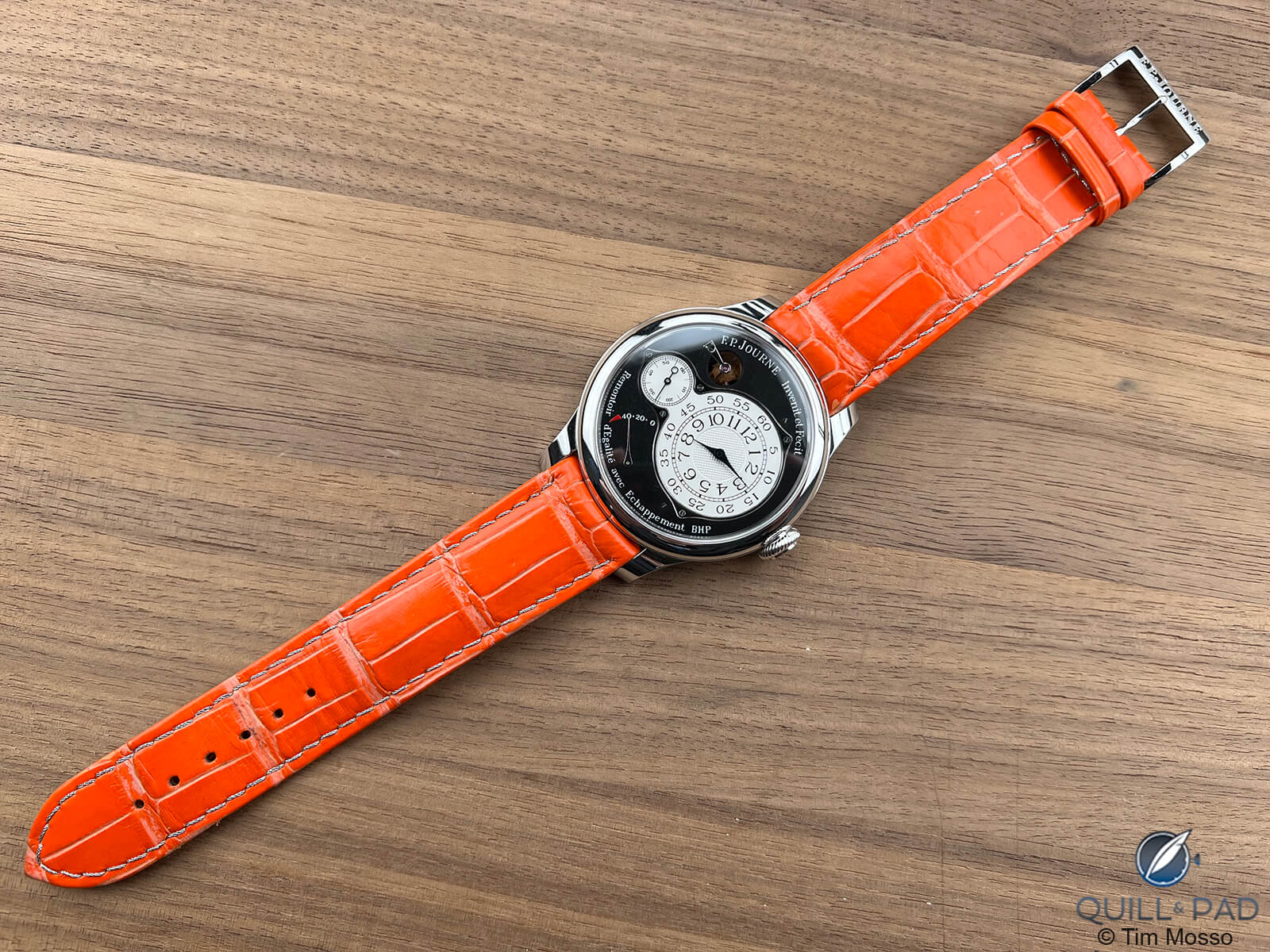
F.P. Journe Chronomètre Optimum Black Label
While I deal with rare and historic Journe watches daily, I don’t wish to own most of them. Except this one. But I’m getting ahead of myself.
The “Black Label” part of the moniker is the easiest to explain. In the late 2000s, Journe decided to launch a visually distinctive product line that would appeal equally base on unique style and exclusive access.
The Black Label series emerged with a blackened gold dials, platinum cases, and availability solely through Journe factory boutiques and “Espaces” (shop-in-shops).
Further, the series, which continues to this day, is available only to previous purchasers of new F.P. Journe watches.
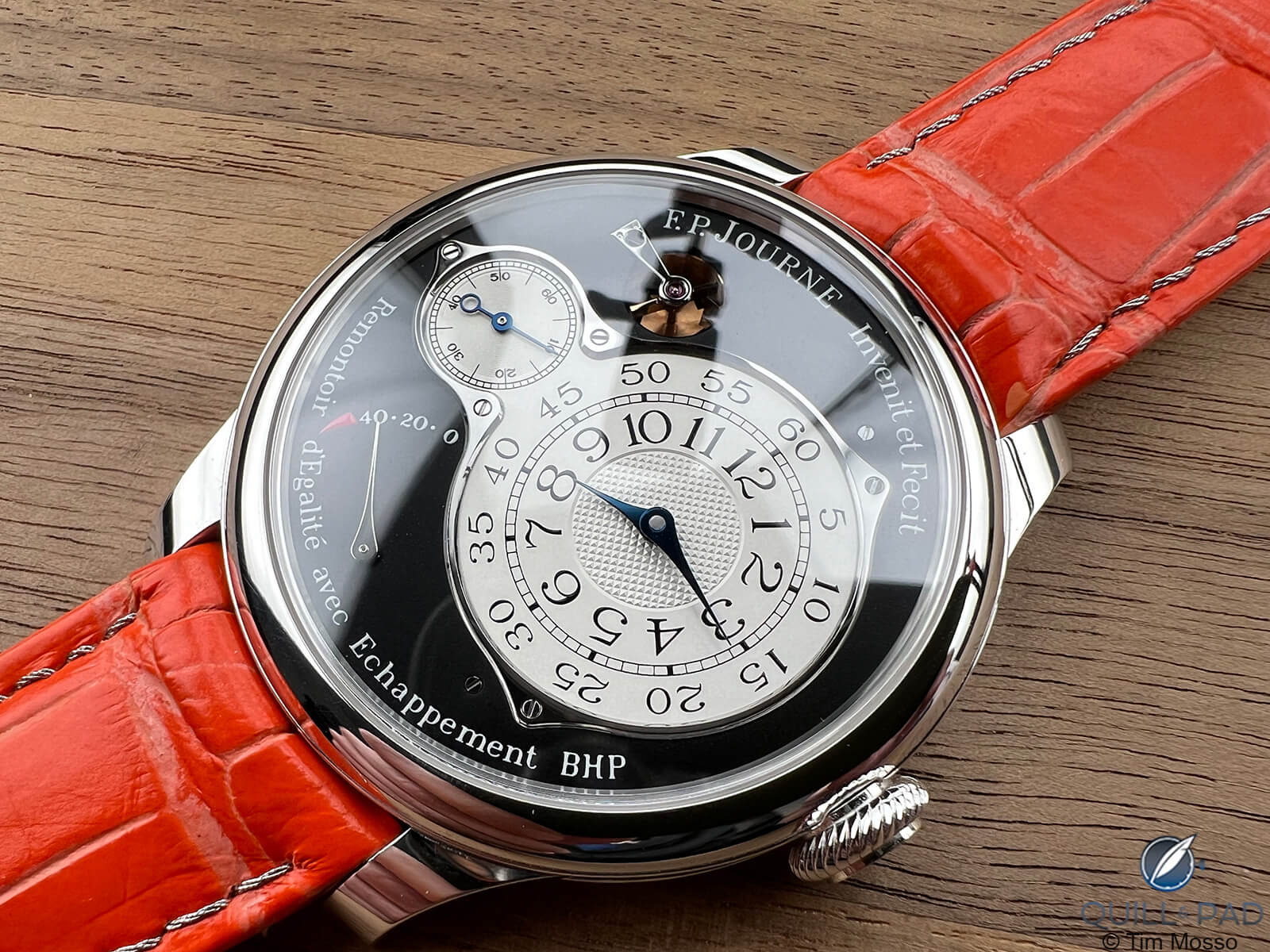
F.P. Journe Chronomètre Optimum Black Label
The qualifying dollar value a client must spend reportedly has grown with time, and there are certain limitations on the number available per store and the number of references that can be built “Black Label” per store per year.
————————————————————————————————————–
—————————————————————————————————–
Having unpacked the “Black Label” status, I must admit that explaining the raison d’être and function of the “Chronomètre Optimum” is more involved. As with most of Journe’s landmark watches, the Optimum had a long gestation period.
Journe’s original prototype of the tourbillon wristwatch with remontoir was complete in 1991, but it didn’t reach the market as a production model until 1999.
The year 2000 Chronomètre à Résonance was an outgrowth of Journe’s mid-1980s experiments with resonance-coupled balance wheels. By the watchmaker’s own account, the Optimum’s development began around 2001.
When launched in 2012, the Optimum was offered in 40mm and 42mm case sizes. The original Journe case dimension of 38mm was still offered on other models, but the Optimum’s 33.6mm diameter caliber 1510 precluded such an offering on this model line.
Readers will note that 33.6mm is huge by the standards of wristwatch movements. However, its dimensions reflect the mass of refinements necessary to achieve its status as François-Paul Journe’s most precise mechanical watch.
—————————————————————————————————–
—————————————————————————————————–
As with all Journe movements, caliber 1510’s very nomenclature reveals both its size – 15 archaic French lignes – and the year design work began in earnest: 2010. But the logic of its engineering needs to be unpacked long-form.
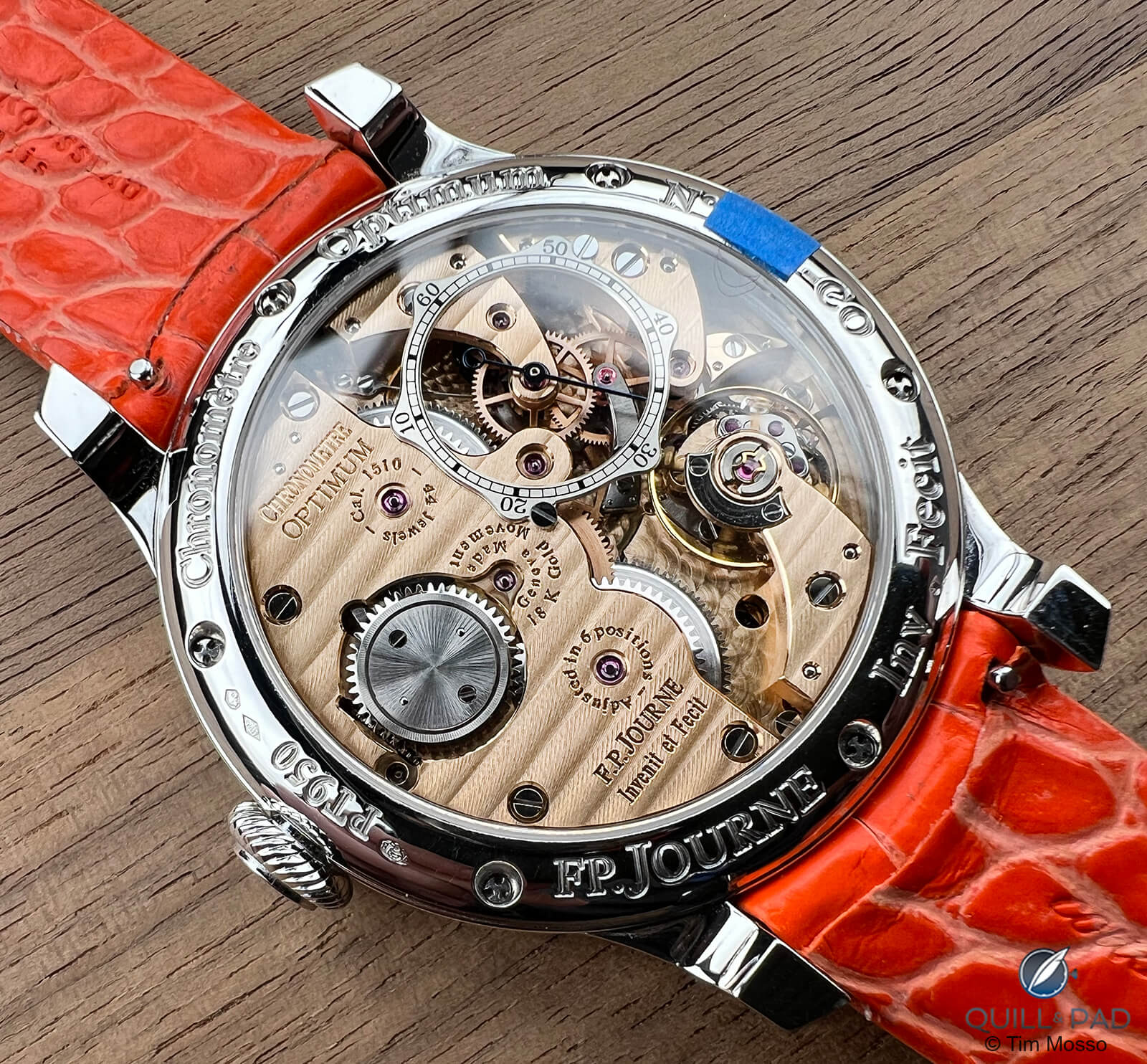
Back of the F.P. Journe Chronomètre Optimum Black Label
Journe employs twin barrels in parallel driving a center-mounted train wheel. The opposing forces of the two barrels negates the tendency of a single barrel to force the wheel off its axis, and the parallel coupling maximizes torque applied.
Downstream from the barrels, a linear titanium spring and a secondary escapement comprise the remontoir. Each second, the system unlocks and transmits downstream enough energy to run the escapement for exactly one second.
By creating a buffer between the barrels – whose energy varies with time – and the escapement, Journe ensures that the mainsprings do not drive the escapement directly for the first 45 of the 70 hours of power reserve. Because the remontoir spring acts as an accumulator of sorts, it alone transmits – perfectly equal – bursts of energy to the escapement.
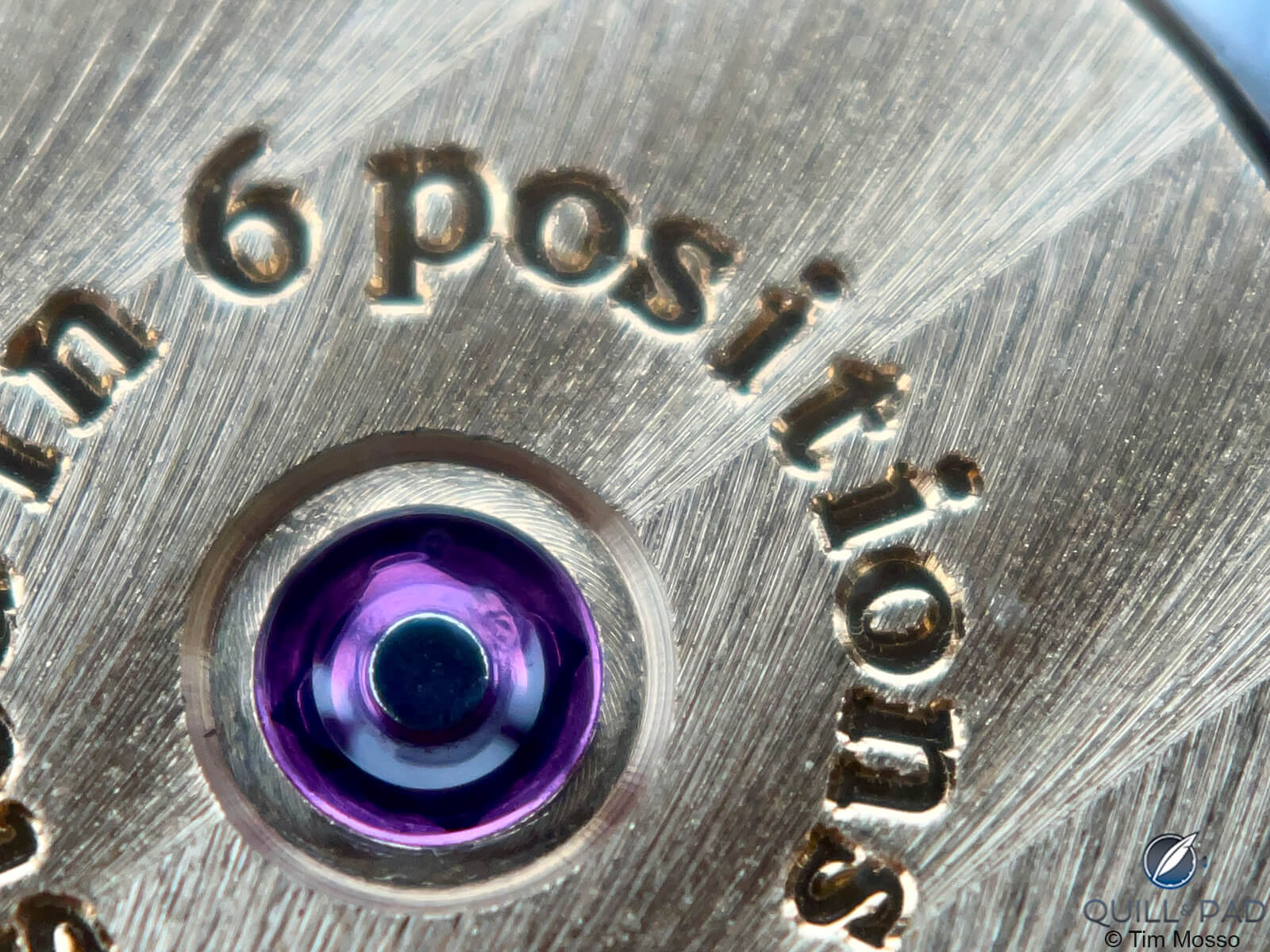
F.P. Journe Chronomètre Optimum Black Label is adjusted to six positions
When wound daily, the remontoir ensures that the balance always oscillates with equal amplitude over time, and this permits extremely precise regulation; rare six-position timing adjustment, an overcoil hairspring, and an exacting free sprung balance capitalize on the opportunity provided by the constant force device.
—————————————————————————————————–
—————————————————————————————————–
As a consequence of the remontoir’s once-per-second unlocking action, Journe jumped on the opportunity to couple the system to a deadbeat seconds display. First employed on the 2004 Tourbillon Souverain, the Journe deadbeat simply extends the pivot of a remontoir train wheel to create a second complication on top of the first.
Take note: the Optimum’s deadbeat display moves counterclockwise due to the orientation of the underlying mechanism. When the remontoir deactivates after 45 hours, the sweeping action of the deadbeat display acts alerts the user that the watch requires winding.
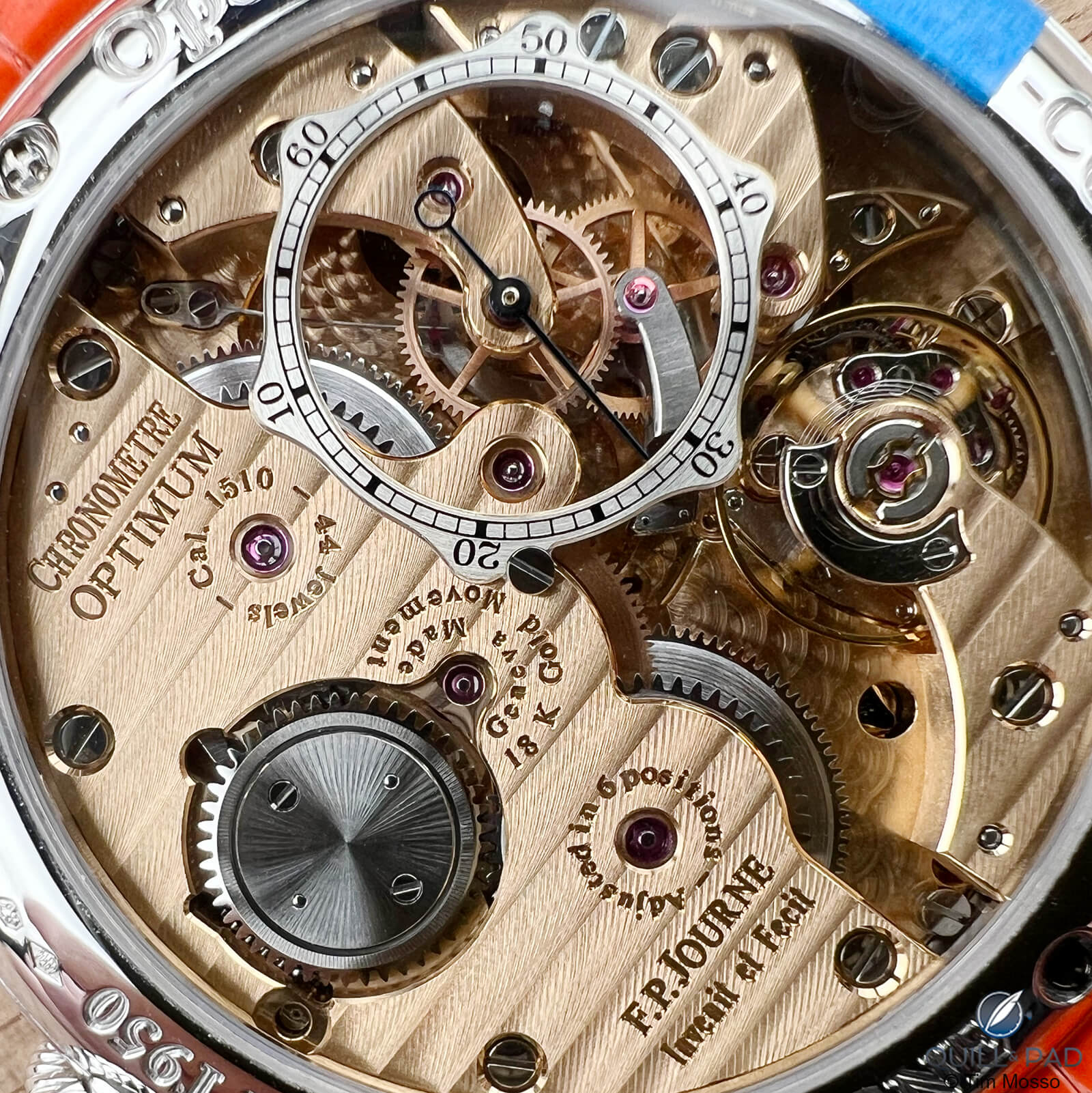
Manufacture Caliber 1510 powers the F.P. Journe Chronomètre Optimum Black Label
Journe combines his remontoir with a double-direct impulse escapement for maximum precision. Based on Abraham-Louis Breguet’s 1802 “natural escapement” the double-direct system used by Journe both emulates and improves upon the original.
Both systems eliminate the “lever” part of the lever escapement and replace it with two counter-rotating wheels that take turns directly striking the roller jewel of the balance back-and-forth. The tangential friction is lower than the sliding friction of lever-based pallet stones.
Each wheel drives the balance only in one direction of travel. Lower friction, reduced maintenance, and improved power reserve are the results.
—————————————————————————————————–
—————————————————————————————————–
Journe’s improved system employs unlubricated titanium escape wheels. Breguet’s original required manufacturing tolerances that were impossible with period technology; Journe’s is perfectly formed with modern methods. Breguet’s system had shock and motion susceptibility that Journe has engineered out of the mechanism.
And Breguet’s system was not self-starting. On that last count, I find that Journe’s escapement is frequently rather than always self-starting; it does need an occasional shake to overcome static friction. Consider it half a win for the modern master.
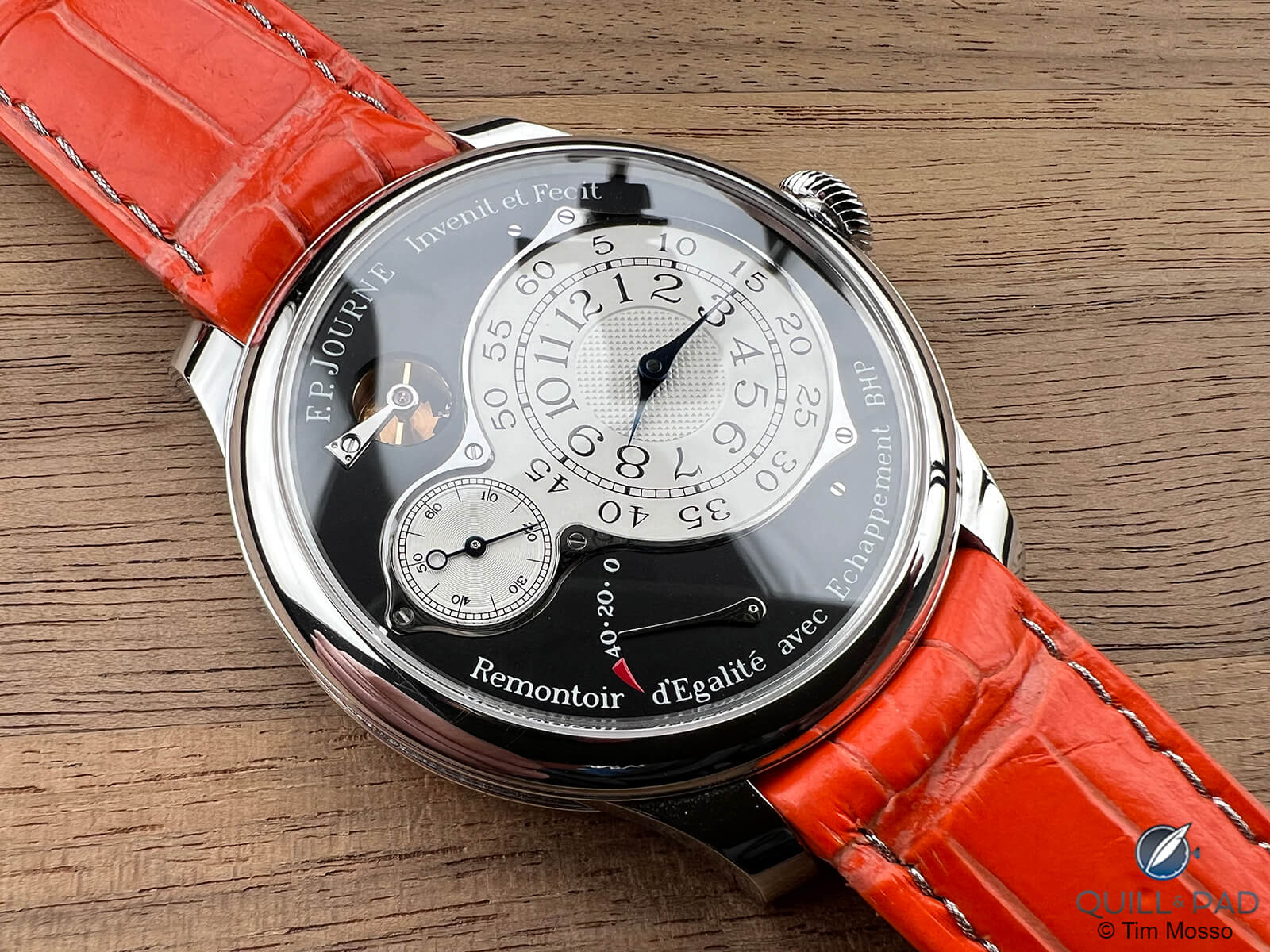
F.P. Journe Chronomètre Optimum Black Label
Aesthetically, the Chronomètre Optimum Black Label benefits from the visual heat of the “Black Label” treatment. High contrast between white platinum, the silver sub-dial, and the black dial base is a crowd pleaser and a proven incentive for collectors to build a relationship with their local Journe stores.
The core Chronomètre Optimum features are less provocative and reflect the cerebral appeal of the model. Its compact time display, cropped power reserve, upper left remontoir operation indicator don’t betray the extreme engineering flexing its muscles below. If anything, it’s only a degree removed from the simplicity of the entry level Chronomètre Bleu and Chronomètre Souverain.
There’s a lack of symmetry to the Optimum’s dial reflective of its engineering-over-all ethic rather than any kind of calculated visual dissonance. This watch is the epitome of the “owner’s watch”; it says everything to its master and nothing to onlookers. If you know, you know.
—————————————————————————————————–
—————————————————————————————————–
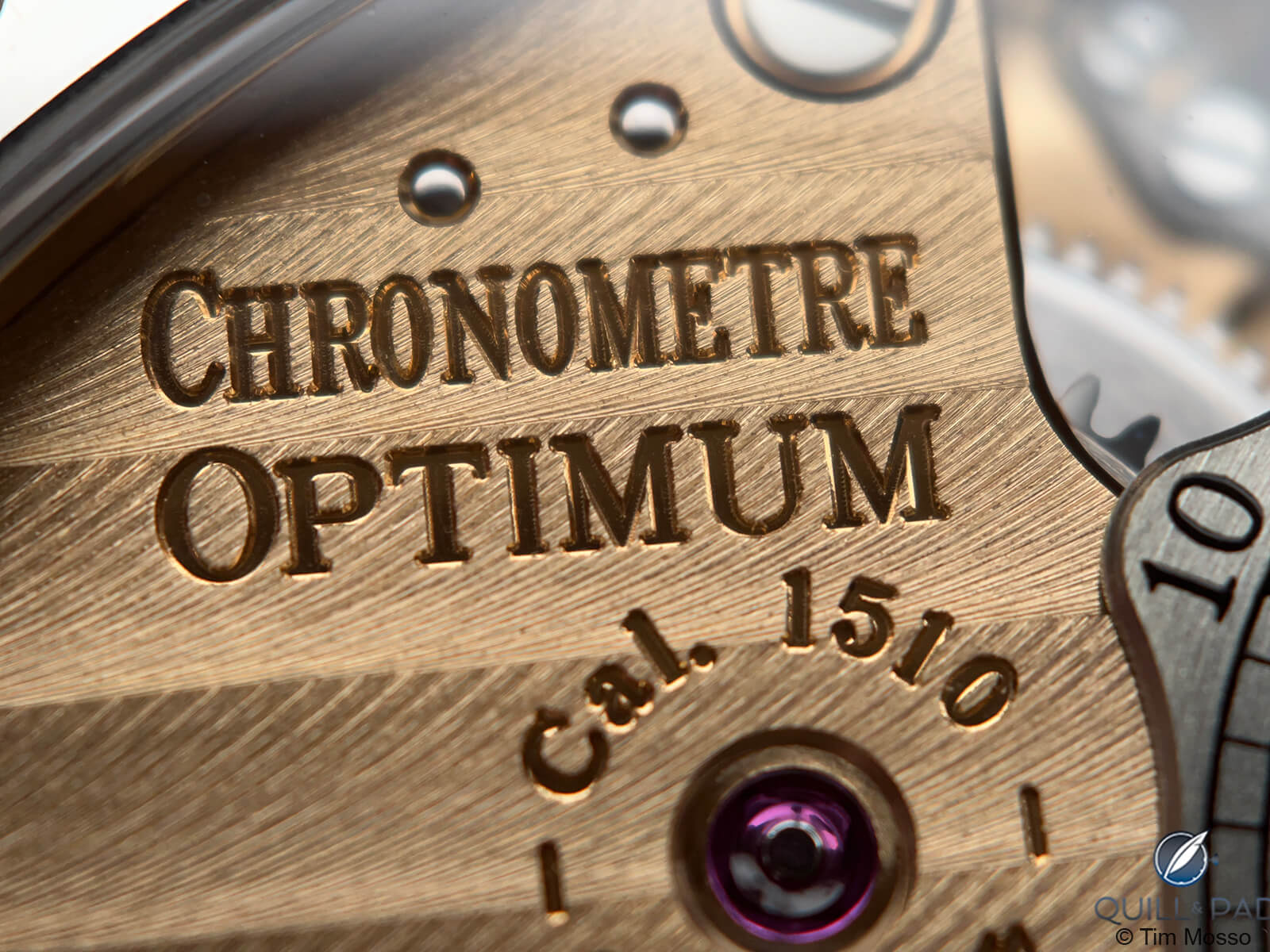
Back of the F.P. Journe Chronomètre Optimum Black Label
F.P. Journe movements reflect the brand’s commitment to innovation, fair retail prices, and clean finish – in that order. This isn’t a Romain Gauthier or a Lang & Heyne device calculated for breathtaking impact under a loupe. Journe’s 2004 transition to solid-gold movements continues to pay dividends with the Optimum’s impressive weight and caliber 1510’s warm glow.

F.P. Journe Chronomètre Optimum Black Label
However, close inspection reveals bridges, wheels, and screws finished to a common standard shared with less august Montres Journe products.
Every letter or numeral on every surface has been applied mechanically. The screws are polished but not finely chamfered. Wheels of gold are rich in composition but plain in detail.
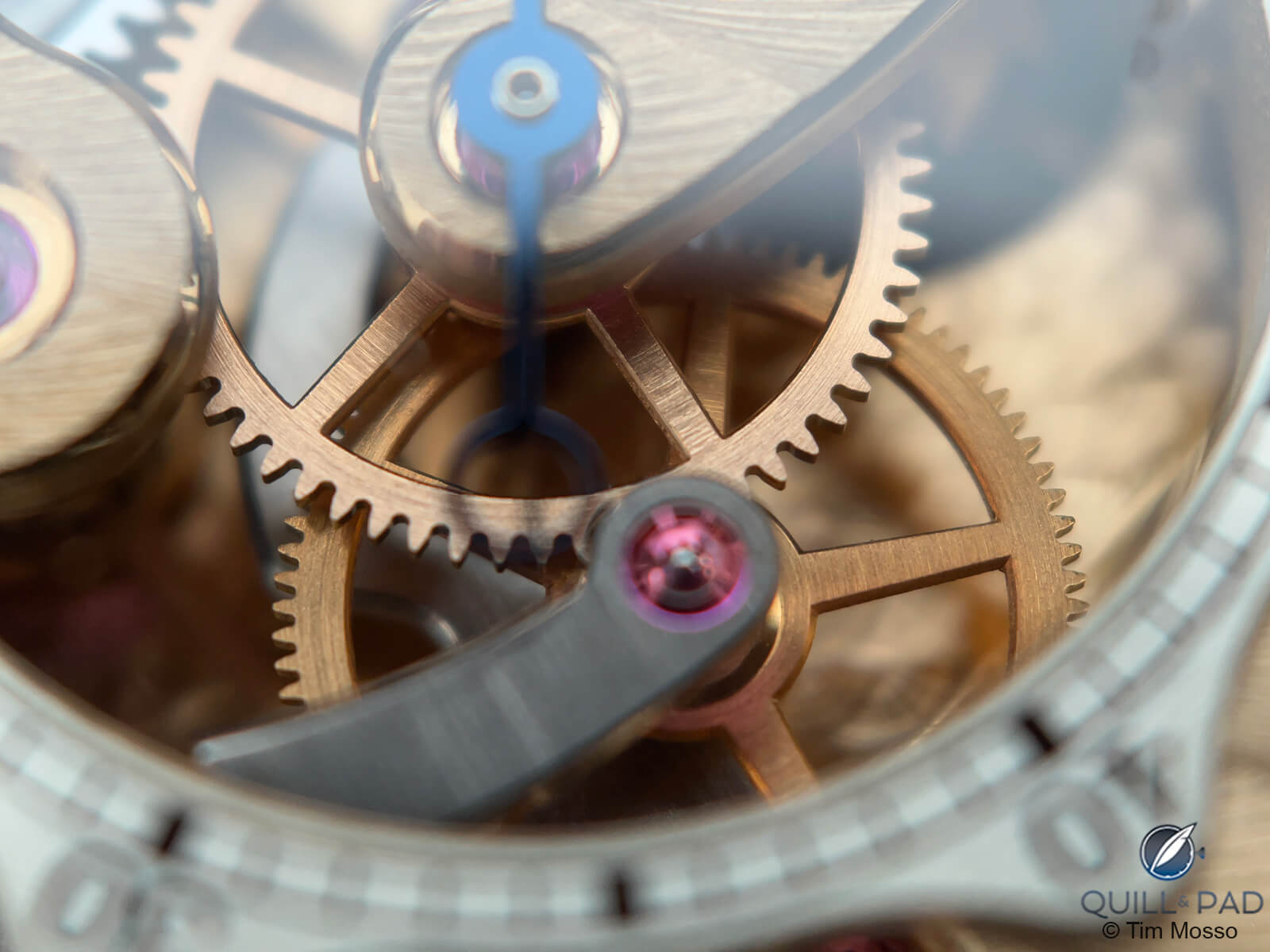
Movement details of the F.P. Journe Chronomètre Optimum Black Label_
Bevels have improved from earlier Journe products that left mechanical milling marks visible, but the surfacing clearly reflects a post-machining beauty pass with a buffer tool rather than hand-filing from the outset.
Only the remontoir assembly, steel escape wheel bridge, and “black” polished hairspring stud holder appear to have been elevated to a level commensurate with this watch’s top-of-the-line billing.
And that’s fine, because Journe watches continue to lead with inventive designs and dealer prices often six-figures below the aftermarket’s level for the same models.
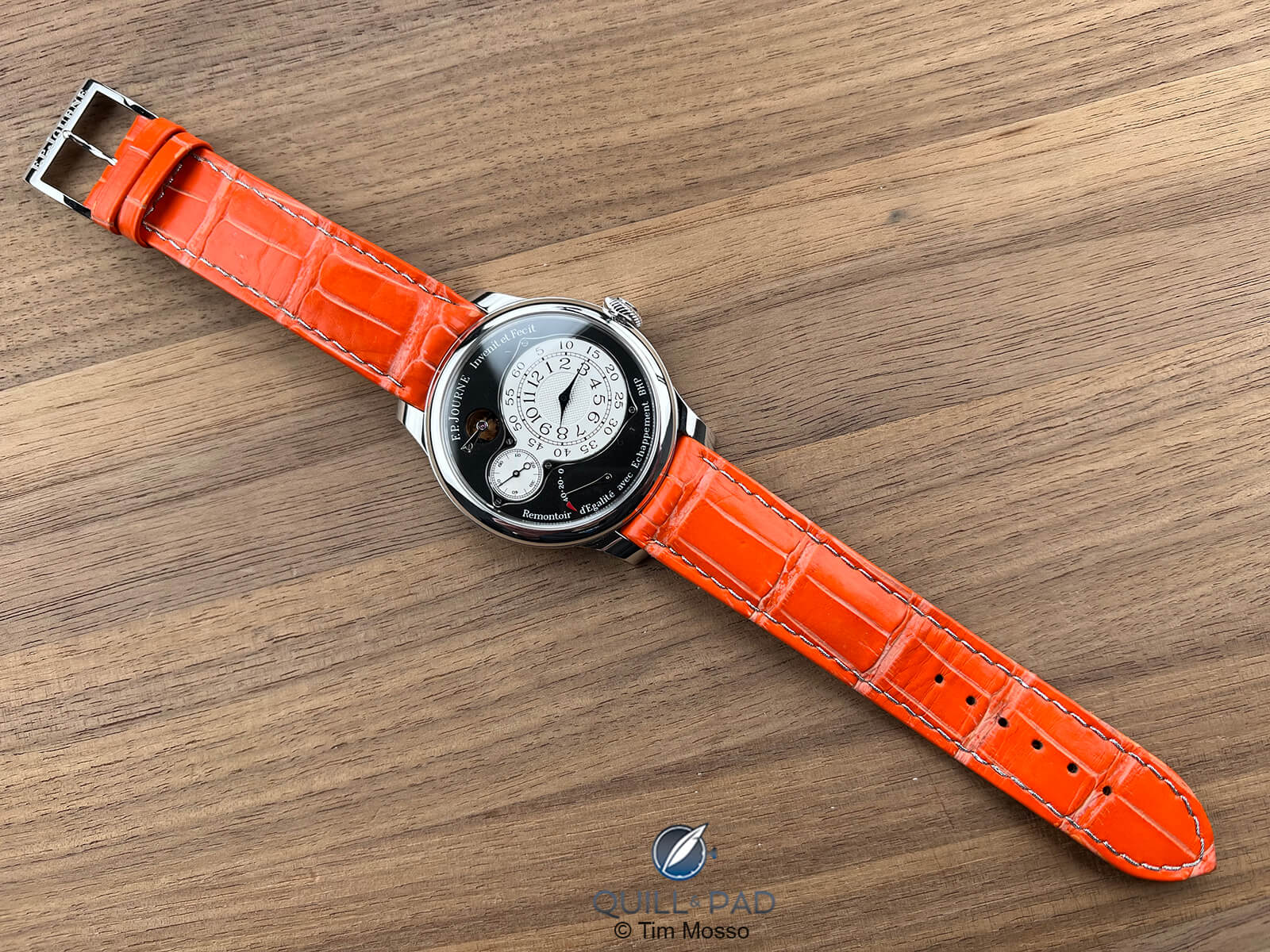
F.P. Journe Chronomètre Optimum Black Label
Despite its appeal to intellect over emotion, the Chronomètre Optimum is a highly sought trophy in Journe collector circles. Because of – and not despite – its appeal to the brain over the heart – this is the only F.P. Journe chef-d’oeuvre on my personal grail list.
For more information, please visit www.fpjourne.com/en/collection/black-label-collection/chronometre-optimum-black-label
Quick Facts: F.P. Journe Chronomètre Optimum Black Label
Reference Code: CO
Edition: Exclusively through F.P. Journe boutiques and Espaces to prior purchasers
Functions: hours, minutes, seconds, counterclockwise deadbeat seconds, power reserve indicator
Dial: Blackened gold with silver sub-dials for hours, minutes, and seconds; power reserve indicator; polished steel bezel for sub-dial displays
Case: Platinum; 42mm; 9.9mm thick; 51.8mm lug-to-lug; 30-meters WR; push down crown
Clasp: Platinum pin buckle or optional single fold deployant clasp
Movement: Caliber 1510, manual winding, 70-hour power reserve, two barrels in parallel, 44 jewels, 3Hz, free sprung balance, six-position adjustment, 33.6mm diameter, 18-karat rose gold bridges and plates, deadbeat seconds, power reserve indicator, remontoir, unlubricated double-direct impulse escapement with titanium wheels.
2024 Price: $167,700
2024 Preowned Price: $250,000
* Tim Mosso is the media director and watch specialist at The 1916 Company. You can check out their very comprehensive YouTube channel at www.youtube.com/@the1916company
You might also enjoy:
F.P. Journe Octa Perpétuelle Reviewed by Tim Mosso
Behind the Lens: The F.P. Journe Tourbillon Souverain
Ludovic Ballouard Upside Down and F.P. Journe Vagabondage I Reviewed by Tim Mosso
Warning, Iceberg Dead Ahead! F.P. Journe Tourbillon Souverain Joaillerie Reviewed by Tim Mosso
Leave a Reply
Want to join the discussion?Feel free to contribute!

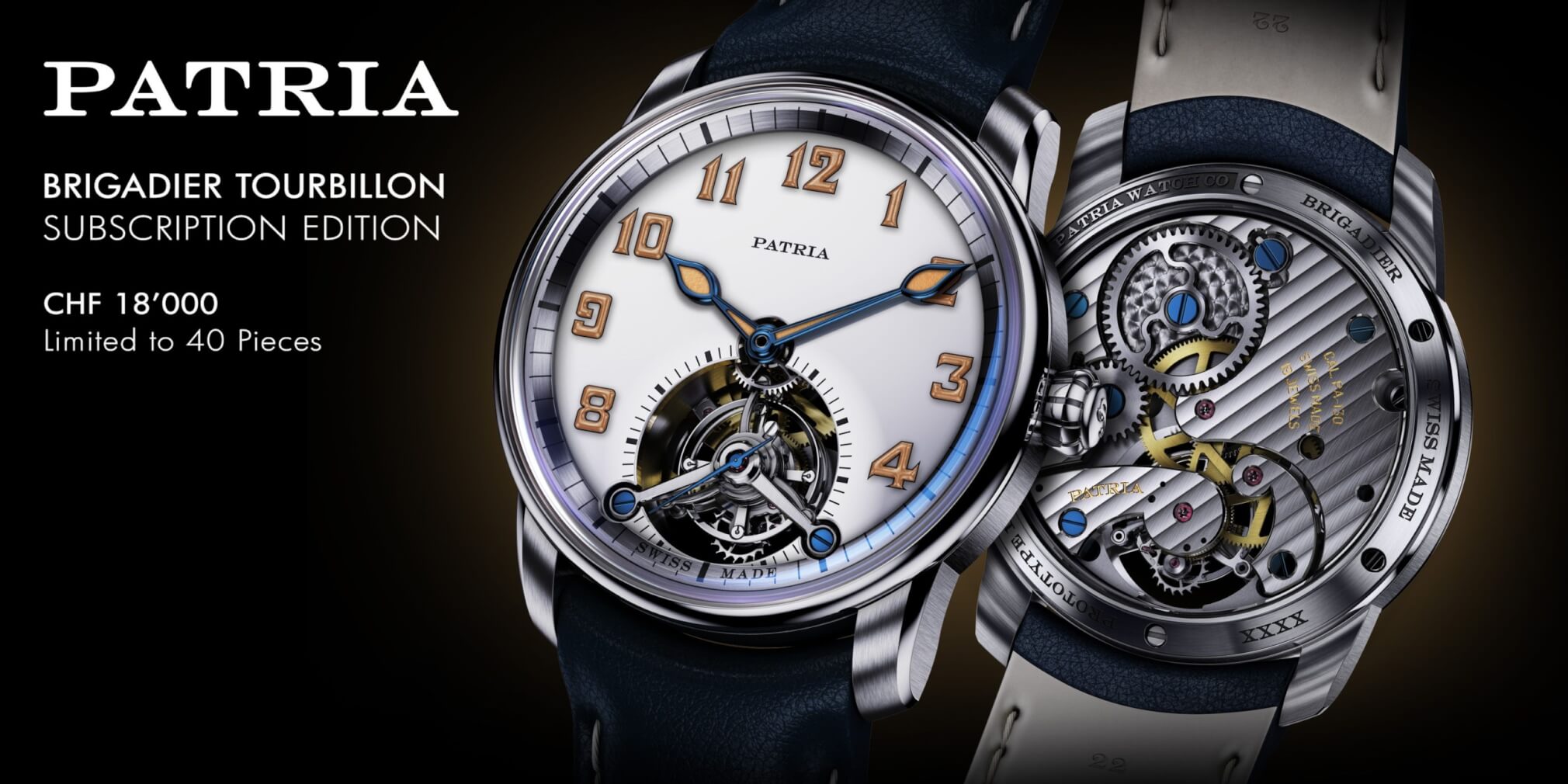
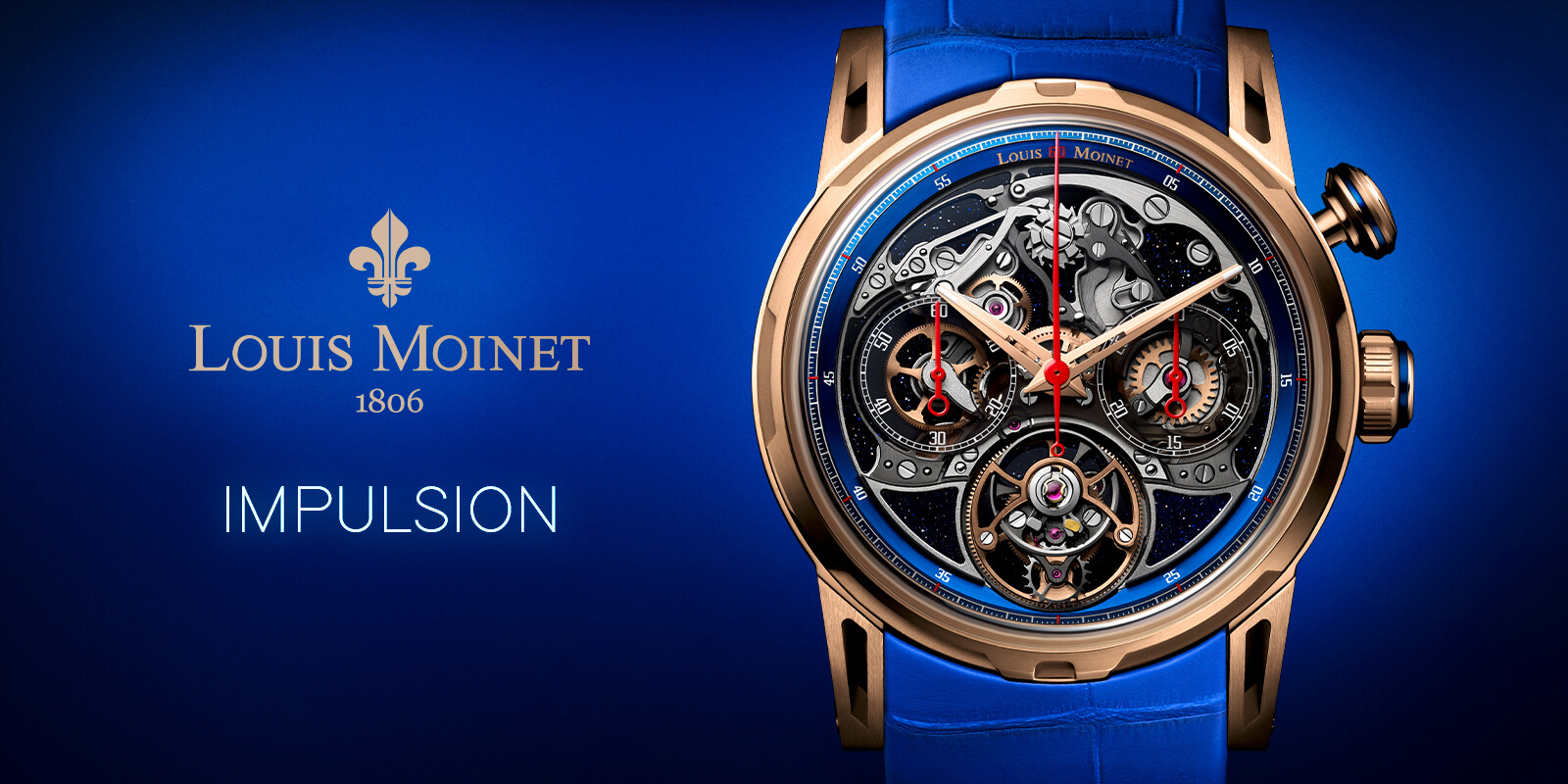
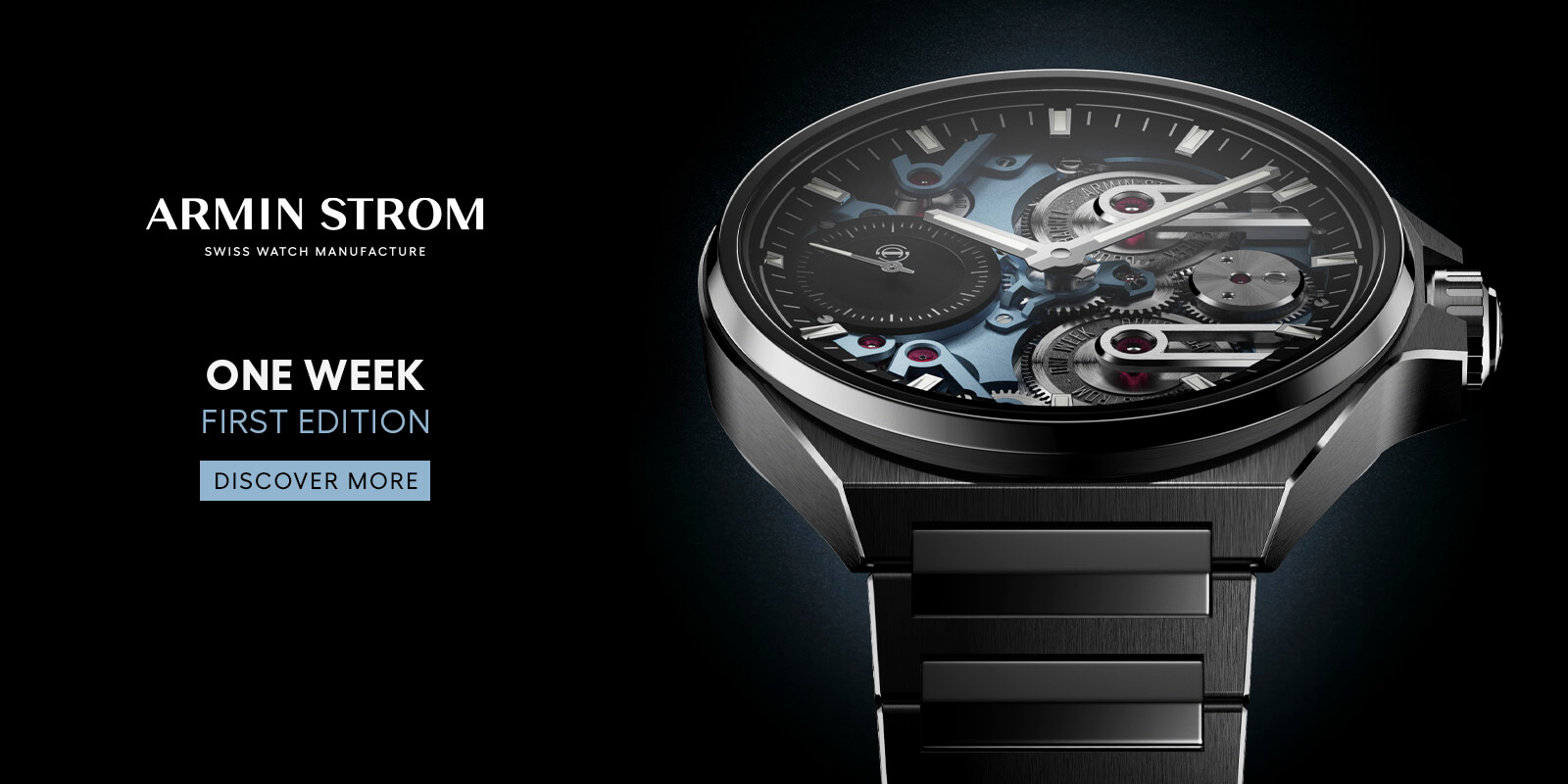
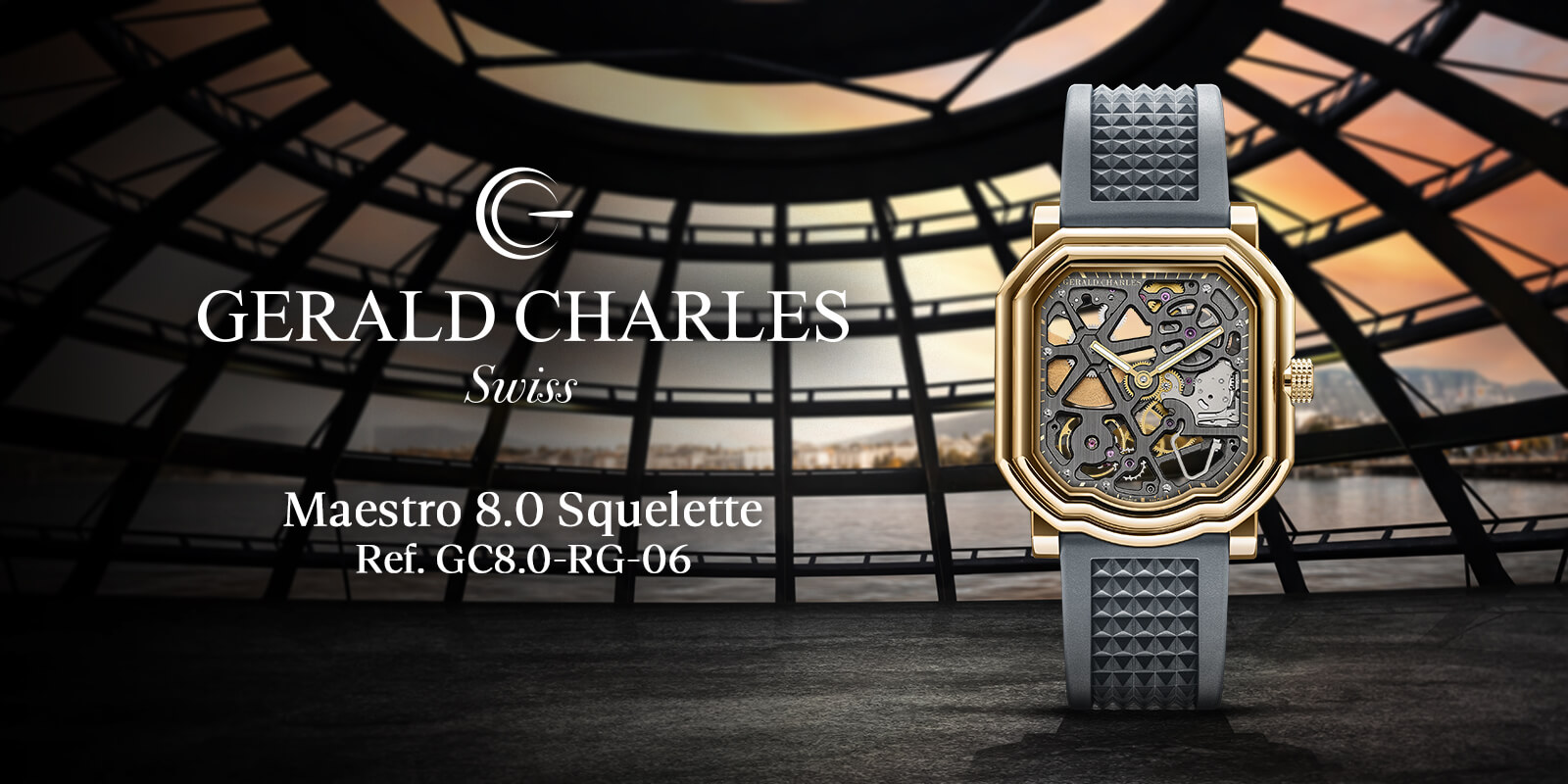


Dear Tim,
Great review as usual, thanks for it!
Please let me know from which company came this great custom made matching strap. Jean Rousseau?
Best
Jost
Yes, it’s a custom piece from Jean Rousseau. Thanks for reading!
-Tim